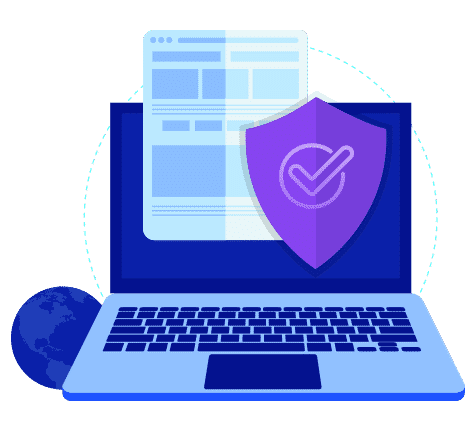DevSecOps for Continuous Delivery
Bring DevOps and Security together to enforce security and risk management best practices

What is DevSecOps?
DevSecOps means thinking about application and infrastructure security from the start. DevSecOps is about built-in security, not security that functions as a perimeter around apps and data. The purpose and intent of DevSecOps is to build on the mindset that everyone is responsible for security.
Why DevSecOps?
If security remains at the end of the development pipeline, organizations adopting DevOps can find themselves back to the long development cycles they were trying to avoid in the first place.
What we do in DevSecOps
Secret Detection
Developers may unintentionally commit secrets and credentials to their remote repositories. If other people have access to the source, the sensitive information is then exposed.
- It scans the content of the repository to find API keys and other information that should not be there.
- Detecting if such preventions are explicitly bypassed.
- Providing a checklist of secrets to roll, and migrate off to more secure storage.
Code Quality Analysis
Quality assurance (QA) is any systematic process of determining whether a product or service meets specified requirements. QA establishes and maintains set requirements for developing or manufacturing reliable products.
- PWSLab provides the capability to not only show the health of an application but also to highlight issues newly introduced.
- It can detect tricky issues such as null-pointers dereferences, logic errors, resource leaks.
- One place to provide a shared vision of code quality for developers, tech leads and managers.
Dependency Scanning
It helps you to automatically find security vulnerabilities in your dependencies while you are developing and testing your applications.
- Identify vulnerable dependencies needing an update.
- The servers return the list of known vulnerabilities for all versions of the packages.
- Then the client picks up the relevant vulnerabilities by comparing with the versions of the packages that are used by the project.
Static Application Security Testing (SAST)
SAST analyzes an application source code to determine if security vulnerabilities exist. It look at the application ‘from the inside-out’, without needing to actually compile the code.
- SAST tools such as Source Code Analysis can detect high-risk software vulnerabilities such as SQL injection which would affect the system through the life of the software.
- SAST systems can be applied early in the software development cycle because it looks at the code before it is compiled and warns of weak spots.
- With cloud-based SAST, there is no need for in-house hardware, once against cutting down on maintenance.
Dynamic Application Security Testing (DAST)
A dynamic analysis security testing tool, or a DAST test, is an application security solution that can help to find certain vulnerabilities in web applications while they are running in production.
- Schedule tests, set the desired depth of testing, and make modifications as business requirements change and threats evolve.
- Provide development and QA teams with a report on critical vulnerabilities along with information that lets them recreate the flaws.
- Continuously scans applications as they evolve, providing automatic detection and assessment of code changes and alerting for newly discovered vulnerabilities.
Container Scanning
In a secure pipeline, Docker image scanning should be a mandatory step of your CI/CD process and any image should be scanned and approved before ever entering “Running” state in the production clusters.
- Checking the software packages, binaries, libraries, operative system files, etc. against one or more well-known vulnerabilities databases.
- Analyzing the
Dockerfileand image metadata to detect security sensitive configurations. - User-defined policies, or any set of requirements that you want to check for every image, like software packages blacklists.
How can you release great software fast, without compromising security?
DevOps and Continuous Delivery practices lead to increased automation and accelerated releases, but the teams driving these initiatives often fail to bring Security and Risk Management teams to the table early enough.
View Case Study
Enhance Release Pipeline Security with PWS
To ensure security steps become an immutable, trackable part of the process without getting in the way, enterprise IT teams rely on the PWSLab DevOps Platform to manage, automate, and control the complete application delivery pipeline.

Stay updated
You’ll gain visibility into the status of every software component at any time, and audit trails are automatically captured.

Security in release process
As you release more often and more quickly, you’ll need a platform like PWSLab to integrate security steps as a part of the release process.

Respond quickly
Armed with audit trails and full visibility into both development changes and environment status, you’ll be able to respond quickly.



